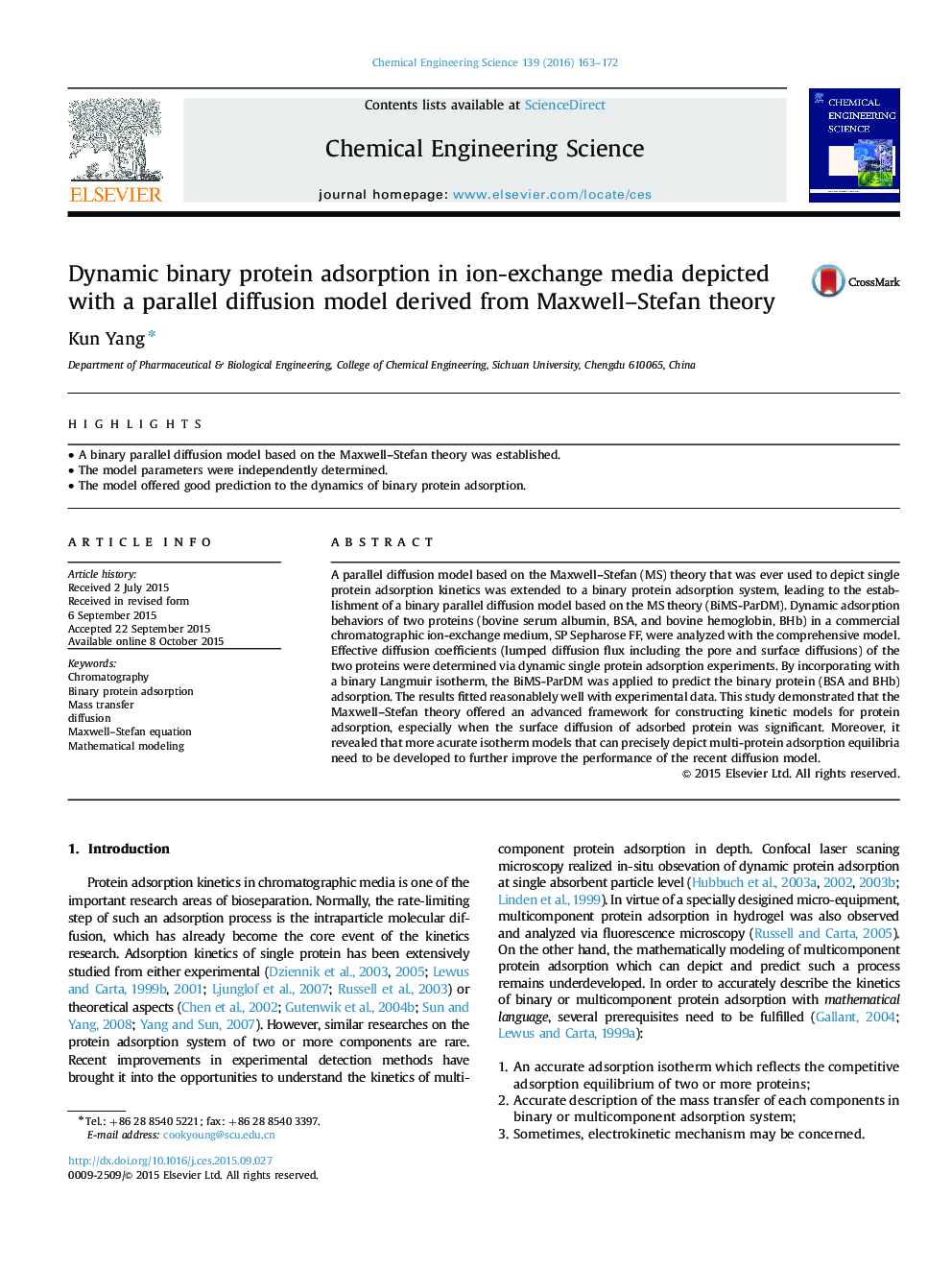| Article ID | Journal | Published Year | Pages | File Type |
|---|---|---|---|---|
| 6589366 | Chemical Engineering Science | 2016 | 10 Pages |
Abstract
A parallel diffusion model based on the Maxwell-Stefan (MS) theory that was ever used to depict single protein adsorption kinetics was extended to a binary protein adsorption system, leading to the establishment of a binary parallel diffusion model based on the MS theory (BiMS-ParDM). Dynamic adsorption behaviors of two proteins (bovine serum albumin, BSA, and bovine hemoglobin, BHb) in a commercial chromatographic ion-exchange medium, SP Sepharose FF, were analyzed with the comprehensive model. Effective diffusion coefficients (lumped diffusion flux including the pore and surface diffusions) of the two proteins were determined via dynamic single protein adsorption experiments. By incorporating with a binary Langmuir isotherm, the BiMS-ParDM was applied to predict the binary protein (BSA and BHb) adsorption. The results fitted reasonablely well with experimental data. This study demonstrated that the Maxwell-Stefan theory offered an advanced framework for constructing kinetic models for protein adsorption, especially when the surface diffusion of adsorbed protein was significant. Moreover, it revealed that more acurate isotherm models that can precisely depict multi-protein adsorption equilibria need to be developed to further improve the performance of the recent diffusion model.
Related Topics
Physical Sciences and Engineering
Chemical Engineering
Chemical Engineering (General)
Authors
Kun Yang,
